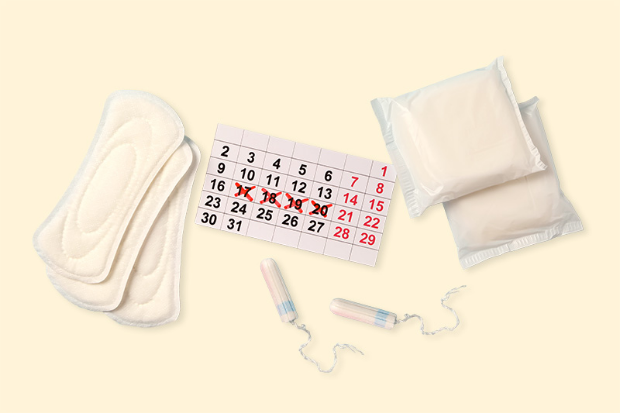Toxic shock syndrome

If you usually use tampons, you should be careful of your hygiene before inserting or before removing the tampon, but also pay attention to the duration of wearing the tampon. In fact, if you keep your tampon for a long time, you could develop a toxic shock syndrome. Toxic shock syndrome (TSS) can be caused by wearing a tampon or menstrual cup for too long (more than 4 to 6 hours). Indeed, some women carry the TSST-1-producing S. aureus bacteria in the vagina and wearing a tampon can block the bacteria in the vagina (not all women with Staphylococcus aureus develop toxic shock syndrome). The bacteria multiply itself in the body and creates dangerous toxins that can hurt the body and be dangerous for health. In fact, these toxins pass into the blood and can damage some organs: heart, liver, lungs… If the shock is too important, it can lead to the amputation of certain parts of the body and even lead to death.
The symptoms of toxic shock syndrome are similar to those of the flu: headaches, vomiting, diarrhea, high fever, sore throat or rashes. The toxic shock syndrome can even lead to loss of consciousness.
If you suffer from these symptoms and have worn a tampon, go directly to an emergency service to receive a diagnosis and antibiotics.
Even if there are some risks if you wear a tampon too long, you don’t have to avoid this sanitary product except if you already had toxic shock syndrome. If you follow some instructions, you reduce the risk of toxic shock syndrome. For example, you need to change your tampon (or menstrual cup) each 4 or 6 hours, it’s not recommended to wear a tampon for the night (prefer pads or menstrual panties). Also be careful to wash your hands before and after inserting or removing the tampon. Finally, don’t wear a tampon if you don’t have your periods.
For better menstrual hygiene and accessibility, discover the Iyni pad and tampon dispenser, designed to make sanitary products easily available in schools, workplaces, and public spaces.
Tampon Shock Syndrome Explained: Causes, Symptoms, and Prevention
Toxic Shock Syndrome (TSS) is a rare but serious infection caused by bacteria, most commonly Staphylococcus aureus or Streptococcus pyogenes. These bacteria can release toxins into the bloodstream, triggering a severe inflammatory reaction. Although menstrual toxic shock syndrome (or tampon-related toxic shock syndrome) is uncommon, it’s important to understand the risks and adopt good menstrual hygiene practices.
The causes of toxic shock syndrome are generally linked to bacterial growth in a warm and humid environment, such as that created by a tampon worn for too long. The use of super-absorbent tampons can also increase this risk. Leaving a tampon in for more than six hours raises the likelihood of bacteria multiplying, which can lead to TSS from tampon use. However, this syndrome can also occur in other situations, such as after a wound, a burn, or surgery.
How to Stay Safe During Your Period: Signs and Prevention of TSS
Recognizing TSS warning signs is essential for quick reaction. Common tampon infection symptoms include a sudden high fever, vomiting, diarrhea, muscle pain, dizziness, a rash resembling sunburn, or low blood pressure. In some cases, a person may also feel extreme fatigue or confusion.
If these symptoms appear while using a tampon, it’s crucial to remove the tampon immediately and seek urgent medical attention. Menstrual toxic shock syndrome progresses rapidly and can become severe within a few hours. Quick medical care helps prevent serious complications.
To reduce the risks, follow these simple but essential tampon hygiene advice:
- Always wash your hands before and after inserting a tampon.
- Choose an absorbency level that matches your menstrual flow.
- Change your tampon every 4 to 6 hours at most.
- Avoid wearing a tampon overnight.
- Alternate between tampons, sanitary pads, or menstrual underwear to promote better hygiene.
These precautions are the foundation of tampon safety and greatly reduce the risk of developing toxic shock syndrome (TSS).
Everything You Should Know About Tampon Shock Syndrome (TSS)
Tampon shock syndrome, or menstrual toxic shock syndrome, remains very rare today, but it should never be taken lightly. Period product brands now clearly display TSS warning signs on their packaging to raise awareness among users. Reading these warnings and adopting proper hygiene habits are essential parts of how to prevent toxic shock syndrome.
Doctors also recommend avoiding tampon use if you’ve previously experienced toxic shock syndrome (TSS), as recurrence is possible. If you experience unusual symptoms during your period, it’s always best to consult a healthcare professional.
Finally, it’s essential to choose safe and trustworthy menstrual products. Organic or hypoallergenic tampons can help reduce irritation, but the key remains responsible and regular use. Proper information about the causes of toxic shock syndrome, tampon infection symptoms, and tampon safety measures allows every menstruating person to better understand the risks and take the right steps to protect their health.
In summary, even though TSS from tampon use is extremely rare, staying alert and well-informed is the best way to protect yourself. Understanding how to prevent toxic shock syndrome and following these simple hygiene tips ensures safe and confident tampon use.

